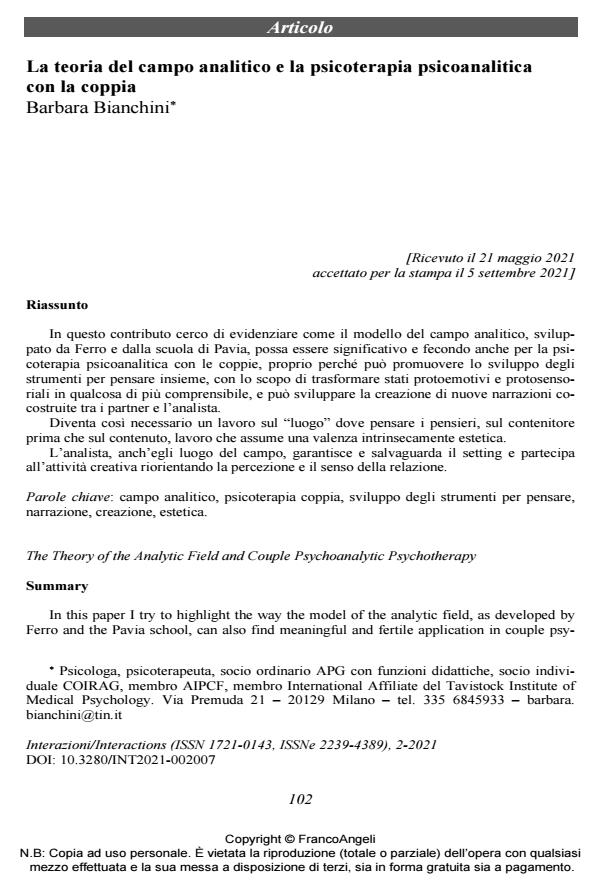The Theory of the Analytic Field and Couple Psychoanalytic Psychotherapy
Journal title INTERAZIONI
Author/s Barbara Bianchini
Publishing Year 2021 Issue 2021/2
Language Italian Pages 18 P. 102-119 File size 205 KB
DOI 10.3280/INT2021-002007
DOI is like a bar code for intellectual property: to have more infomation
click here
Below, you can see the article first page
If you want to buy this article in PDF format, you can do it, following the instructions to buy download credits

FrancoAngeli is member of Publishers International Linking Association, Inc (PILA), a not-for-profit association which run the CrossRef service enabling links to and from online scholarly content.
In this paper I try to highlight the way the model of the analytic field, as developed by Fer-ro and the Pavia school, can also find meaningful and fertile application in couple psychoana-lytic psychotherapy. It can promote the development of instruments for thinking together, with the aim of transforming proto-emotional and proto-sensorial states into something more un-derstandable, and can lead to the creation of new narrations, co-constructed between the couple and the analyst. It therefore becomes necessary to work on the "place" for thinking thoughts, to work on the container before working on the content, work which assumes an intrinsically aesthetic value. The analyst, as a place in the analytic field, guarantees and safeguards the setting and takes part in the creative process by re-orientating the sense impression and meaning of the relation-ship.
Keywords: analytic field, couple psychotherapy, development of instruments for thinking, nar-ration, creation, aesthetic.
- Il gruppo come strumento di lettura e cura della coppia e della famiglia Margherita Autuori, Barbara Bianchini, Lara Giambalvo, Nicoletta Jacobone, Chiara Labadini, Velia Ranci, Maria Gabriela Sbiglio, Alessandra Verri, in GRUPPI 2/2025 pp.135
DOI: 10.3280/gruoa2-2022oa19798
Barbara Bianchini, La teoria del campo analitico e la psicoterapia psicoanalitica con la coppia in "INTERAZIONI" 2/2021, pp 102-119, DOI: 10.3280/INT2021-002007